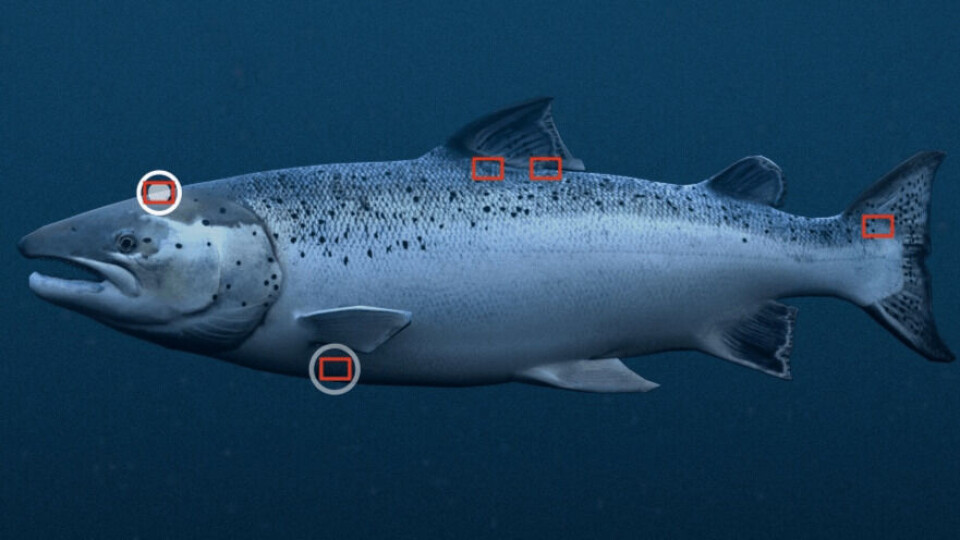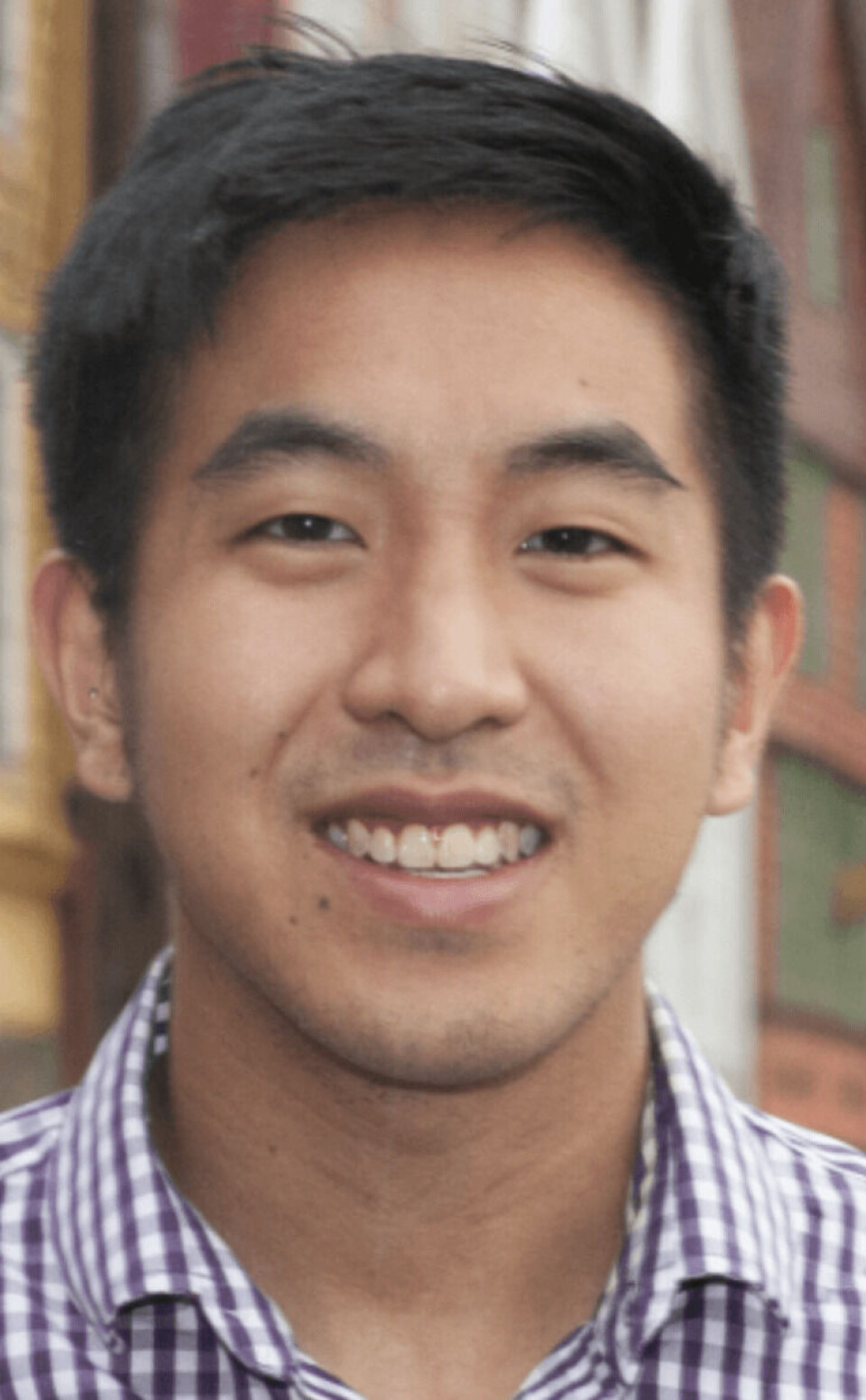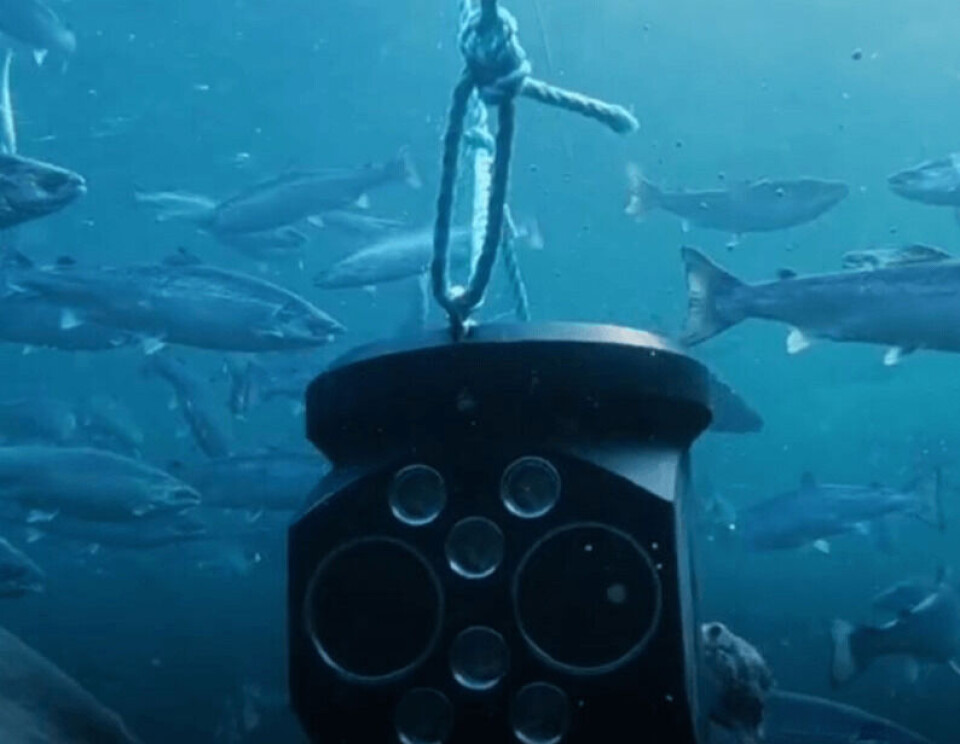
Automatic lice counting on trial at Scottish farms
An automatic lice-counting system that is said to give a much more accurate figure than manual counting is on trial at two salmon farm sites in Scotland.
The system, which uses machine learning to analyse camera images of salmon in pens, has been supplied by Aquabyte, which is based in Norway and Silicon Valley in California. The cameras have been in operation since early October.
Aquabyte’s cameras have been trialled by around 20 salmon farmers in Norway, but authorities there have until recently insisted that any lice information provided by camera technology is backed up by manual counting.
That has now changed, with two salmon farmers - Kvarøy Fiskeoppdrett and Seløy Sjøfarm - receiving dispensation from the Norwegian Food Safety Authority to use automatic lice counting alone.

Aquabyte chief executive Bryton Shang said the accuracy offered by remote lice counting was much greater because so many more fish were looked at. The system also removed the need for handling fish.
“There shouldn’t be a need to handle the fish anymore. It’s bad for the fish and it’s not statistically significant,” said the executive.
“You can count 10 times as many fish in a day (using a cage camera) as you can count manually in a week. It’s an order of magnitude different. Then you see the actual infestation patterns and you’re not biasing your sampling, you’re not just sampling the ‘loser fish’ at the top of the pen.”
Biomass estimation
The cameras images are also being used for biomass estimation and for keeping tags on fish welfare, using analysis of swimming patterns and recognition of wounds. The company is also working on other ways to use the images to help fish farmers.
“Everything fundamentally is analysed from the same image, so once you have the camera in the pen you can analyse the image in different ways. You can look for lice and you can look for biomass and you determine the weight,” said Shang, a Silicon Valley entrepreneur with a background in artificial intelligence (AI) and machine learning.

Slower Scottish internet
The Aquabyte system being used in Scotland, and in Chile, has been adapted from that used in Norway to take account of lower internet capacity at farm sites.
“For Scotland we had to build a version where the images are processed on the camera, so you don’t use up the bandwidth by (constantly) transmitting the images over the internet,” said Shang.
The company intended to establish an office in Scotland earlier this year, but that plan has been delayed because of the Covid-19 pandemic. Because it doesn’t have staff available in Scotland to offer support to fish farmers, Aquabyte hasn’t yet offered its equipment to other companies who might be interested.
“If and when things resolve we would look at that again,” said Shang, who stressed that Aquabyte was keen to establish itself in the country.
Removes need for feed cap
Aquabyte has contributed to the consultation by the Scottish Environment Protection Agency (SEPA) on whether to continue controlling the amount of salmon faeces settling beneath pens by limiting biomass or to switch to a limit of the amount of feed used.
“Part of SEPA’s consideration for biomass versus feed caps was that they couldn’t get very accurate assessments of the biomass, therefore they wanted to go to feed,” explained Shang.
“Our argument was that there are now very accurate ways to measure biomass, so that shouldn’t be considered as a reason for why you should switch to feed caps.”
SEPA’s consultation has closed but no decision has yet been made on the issue until the agency does more research on biomass counters.
Marine Scotland
Shang said Aquabyte had had a positive response from Marine Scotland about automatic lice counting.
A Scottish Government spokesperson recently told Fish Farming Expert: “Marine Scotland welcomes trials of machine lice counting. As regulator, they would need to be satisfied that a consistent count is being achieved or a ‘good’ average is being provided as it is key that the process is reliable and can allow effective decisions on fish health/treatment to be made. We await the outcome of those trials to enable us to give it further consideration.”























































